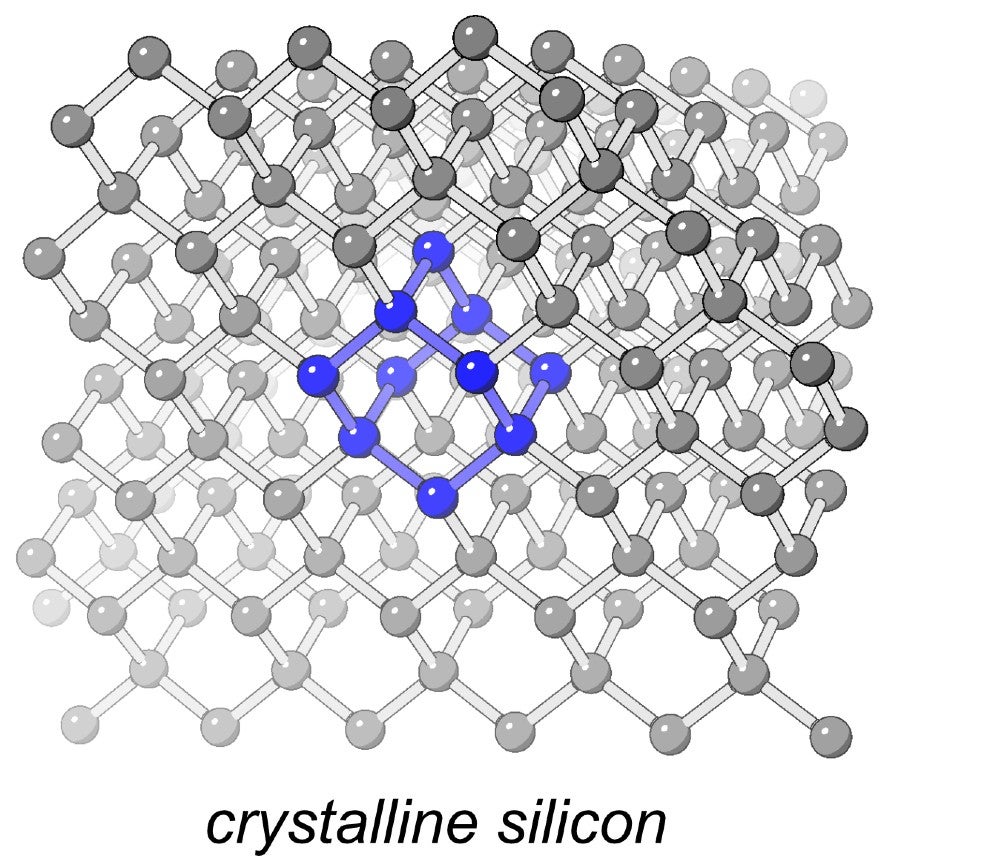2025-07-08 カリフォルニア大学リバーサイド校 (UCR)
![]()
Chemical structure of bulk silicon, with the simplest building block of the solid highlighted in blue. (Tim Su/UCR)
<関連情報>
- https://news.ucr.edu/articles/2025/07/08/scientists-find-new-way-control-electricity-tiniest-scale
- https://pubs.acs.org/doi/10.1021/jacs.5c04272
結晶シリコン・ユニットセルの分子アナログにおける量子干渉 Quantum Interference in a Molecular Analog of the Crystalline Silicon Unit Cell
Matthew O. Hight,Ashley E. Pimentel,Timothy C. Siu,Joshua Y. Wong,Jennifer Nguyen,Veronica Carta,and Timothy A. Su
Journal of the American Chemical Society Published: May 1, 2025
DOI:https://doi.org/10.1021/jacs.5c04272
Abstract
This manuscript describes the emergence of destructive σ-quantum interference (σ-DQI) in sila-adamantane, a molecule whose cluster core is isostructural with the crystalline silicon unit cell. To reveal these σ-DQI effects, we take a bridge-cutting approach where we conceptually pare sila-adamantane down to its bicyclic Si[3.3.1] and linear oligosilane forms. Scanning tunneling microscopy break-junction (STM-BJ) measurements reveal that conductance in single-molecule junctions of the tricyclic sila-adamantane is 2.7-times lower than their bicyclic Si[3.3.1] analog. The only structural difference between their cluster cores is a remote dimethylsilylene bridge that is present in sila-adamantane yet absent in Si[3.3.1]. Density functional theory calculations reveal that this dimethylsilylene enforces C3 symmetry at the sila-diamondoid bridgeheads, allowing each electrode to couple into the three cluster bridge dimensions equally. Though each bridge alignment is sterically equivalent, they have profound electronic differences: when electrodes align with the long branches of sila-adamantane, strong σ-DQI interactions occur between frontier molecular orbitals that suppress electronic transmission across the molecular junction. We exploit these alignment-dependent σ-DQI effects to create new forms of stereoelectronic conductance switches, where a reversible mechanical stimulus controls which pathway through the diamondoid framework the electrodes align through. This represents the first example of dynamic modulation of σ-DQI and enables us to achieve switching ratios (average on/off ∼5.6) higher than previously reported σ-stereoelectronic switches. These studies reveal how the innate dimensionality and symmetry of crystalline silicon influence charge transport at its most fundamental level, and how these principles can be harnessed to control quantum interference in single-molecule electronics.




